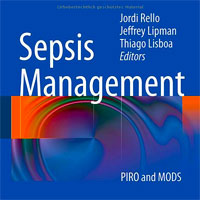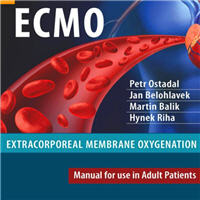Serum MANF vs. Severity and Prognosis in Community-acquired Pneumonia Patients
This evidence demonstrated that serum mesencephalic astrocyte-derived neurotrophic factor (MANF) is positively associated with scoring criteria and poor prognosis in community-acquired pneumonia (CAP) patients. Serum... read more
Tocilizumab vs. IVIG in Patients with Severe COVID-19 Pneumonia
Severe COVID-19 patients who received IVIG in the early phase of the disease did not show better clinical outcomes in terms of mortality, hospitalization time and intensive care unit admission compared to those who received... read more
Management of Chest Trauma: A Practical Guide
75% of patients who die from trauma have injuries to the chest. The care of the chest trauma patient can be incredibly complex, require multiple specialty and sub-specialty services, and may require interventions available... read more
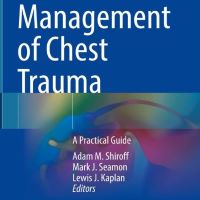
Holy Water Not so Holy: Potential Source of Elizabethkingia Pneumonia and Bacteremia in an Immunocompromised Host
This case report highlights that E. anophelis may indeed cause significant infection and should not be considered a contaminant especially in immunosuppressed individuals. The organism originates from water sources and may... read more
Levosimendan Role in ECMO for Refractory Cardiac Arrest
Levosimendan use in extracorporeal cardiopulmonary resuscitation (ECPR) did not improve survival. Neurological outcome could be representative of the short- and long-term outcomes. Future well-designed randomized trials... read more
Fever Management with or without a Temperature Control Device After OHCA and Resuscitation
the TEMP‐CARE trial will advance our understanding of post‐cardiac arrest care fever management strategies. With a large sample size and a broad patient population, the results of this trial will inform clinical practice... read more
50 Landmark Papers Every Intensivist Should Know
This book identifies the key scientific articles in the field of Intensive Care and explains why these papers are important in contemporary clinical management. Identifying those influential contributors who have shaped... read more

Ventilator-associated Pneumonia Pathogenesis: Old and New Mechanisms
Ventilator-associated pneumonia (VAP), defined as a lung infection that occurs in patients after 48 hours on mechanical ventilation, is among the most frequently found nosocomial infections in intensive care units around... read more
Aminoglycosides Impact on Survival Rate and Renal Outcomes in Patients with Urosepsis
The addition of aminoglycosides to beta-lactam therapy in critically ill patients with urosepsis did not significantly improve 30-day survival. Furthermore, aminoglycosides were not associated with worse renal outcomes.... read more
Femoral Head Osteonecrosis in Post-COVID-19 Patients
This study provides an insight into the relationship between COVID-19-related factors and the development of osteonecrosis of the femoral head (ONFH), emphasizing the critical role of cumulative steroid dose as the primary... read more
Cardiac Intensive Care
Using a multidisciplinary, team-oriented approach, this unique title expertly covers all the latest approaches to the assessment, diagnosis, and treatment of patients with critical cardiac illness. Led by Dr David L. Brown,... read more
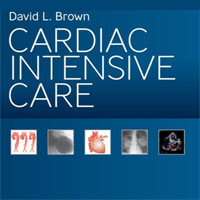
Clinical Respiratory Anatomy and Physiology in the ICU: Anatomophysiopathology and gasometry of patients on invasive mechanical ventilation
Breathing is a physiological process that is fundamental to life. The respiratory system can be likened to a vital pump allowing the exchange of gases between the cells of an organism and the external environment. A number... read more
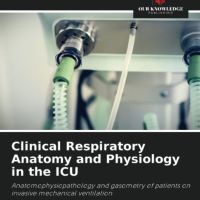
Wireless Wearable Doppler Ultrasound: Monitoring Trauma Patients
This study demonstrated the feasibility of placing the wireless, wearable Doppler ultrasound on severely injured trauma patients admitted to the trauma bay of a busy level 1 trauma center. The device reliably captured... read more
Weaning Failure Prediction Using Electrocardiographic Time-frequency Analysis and Respiration Flow Signals
Weaning patients from mechanical ventilation (MV) is a crucial process that requires meticulous assessment of their ability to breathe independently without ventilatory assistance. Spontaneous breathing test (SBT) is... read more
Ventilator Management: A Pre-Hospital Perspective
The goal of this book is to provide the most up to date information on mechanical ventilation based on current research, evidence based practice and my experiences as a flight paramedic and educator. A comprehensive look... read more
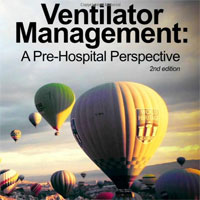
Anesthesia Role in Sedation and Weaning From Mechanical Ventilation
This systematic review highlights the advantages of anesthetic sedation strategies, particularly the use of dexmedetomidine, methadone, or sequential sedation protocols, in improving weaning outcomes, enhancing sedation quality,... read more
Dexmedetomidine Use for Palliative Sedation in Non-ICU Settings
Dexmedetomidine is a promising adjunct to be considered for palliative sedation when managing end-of-life symptoms such as refractory pain, anxiety, or delirium. This medication should be considered a reasonable alternative... read more
Clinical Characteristics and Survival Outcomes of Invasive Pulmonary Aspergillosis Patients
Invasive pulmonary aspergillosis (IPA) is a severe infectious disease caused by Aspergillus spp. It is associated with high mortality, particularly in immunocompromised patients, as well as in those with COVID-19 pneumonia... read more
Improving Critical Care Survivorship: A Guide to Prevention, Recovery, and Reintegration
This book, just published, provides a comprehensive overview of improving critical care survivorship. Comprised of four sections, the text presents interventions that can be used to improve patient outcomes and reduce the... read more
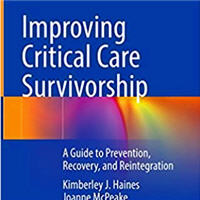
Baricitinib Use in Children with Severe COVID-19 Infection
Baricitinib appears safe for both immunocompetent and immunocompromised children hospitalized for severe COVID-19. Most adverse events did not inhibit therapy administration, and there were no deaths following the initiation... read more
Analgosedation Practice During Noninvasive Respiratory Supports
Sedation is frequently used in patients with acute respiratory failure (ARF) undergoing Noninvasive Respiratory Supports (NRSs). Current analgesic practices are becoming more standardized, with analgosedation strategies increasingly... read more
Sepsis Management: PIRO and MODS
This book is unique in approaching multiple organ dysfunction syndrome (MODS) from the perspective of its pathophysiological mechanism, and addressing aspects that are overlooked in most of the available literature. Eminent... read more
